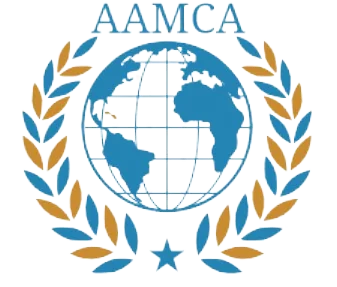The Current Crisis: Understanding the Scope of Violence Against Education
In the past year, the landscape of education has been marred by a troubling increase in violence directed towards schools and educational institutions. Reports indicate a staggering 44 percent rise in attacks, signifying a crisis that demands urgent attention. This surge is not merely a number; it embodies the fears and challenges faced by students, educators, and communities globally.
The implications of this violence extend far beyond immediate physical safety concerns. Students, who are meant to be in a nurturing environment to learn and grow, find themselves navigating a climate of fear and uncertainty. The trauma associated with these attacks profoundly affects their emotional well-being, hindering their ability to concentrate, participate, and thrive in educational settings. The psychological impact on young learners can lead to lasting scars, affecting their academic performance and social development.
Educators, too, bear the weight of this violence. Teachers who strive to inspire and educate are often placed in precarious positions, dealing with not only their own fears but also those of their students. The emotional toll is immense, as they juggle the responsibilities of providing a safe learning space while grappling with the realities of potential threats. Many educators report feeling disheartened and vulnerable, which can impede their effectiveness in the classroom.
Moreover, the ripple effect of these attacks on education ripples across entire communities, disrupting the societal fabric that relies on a well-educated populace. As educational institutions face closures or heightened security measures, the pathway to knowledge for many becomes obstructed. The potential loss of future leaders, innovators, and thinkers could have detrimental effects on societal growth and progress. Therefore, it is imperative to not only recognize the alarming statistics surrounding violence against education but also to catalyze action and advocacy to create a safe, conducive environment for learning.
The Impact of Educational Disruption on Communities and Nations
The disruption of education due to attacks on educational institutions has profound consequences, extending well beyond the immediate victims. When schools are targeted, access to education is severely impeded, leading to a cascade of effects that can cripple entire communities and nations. One of the most pressing issues that arise from this disruption is its impact on economic development. Countries with lower educational attainment often face significant challenges in fostering a skilled workforce, which is essential for driving innovation and attracting investment. The absence of education stunts human capital development, thereby hampering economic growth and exacerbating poverty levels.
Moreover, the loss of access to education perpetuates cycles of poverty within affected communities. Families may find themselves trapped in a state of economic hardship, as children deprived of education are less likely to secure better job opportunities in the future. This outcome contributes to a generational cycle where socioeconomic disadvantages are inherited rather than broken. Reports show that communities with high levels of educational disruption often experience increased crime rates and unrest, as young people lacking constructive opportunities may turn to violence or other harmful behaviors. Thus, educational disruption not only diminishes individual potential but also threatens communal and national security.
Additionally, the educational opportunities denied to children have long-term implications for their development and well-being. Access to consistent education is crucial for cognitive, emotional, and social growth. Without it, children face challenges in developing essential life skills and resilience, leading to increased vulnerability to exploitation and marginalization in society. Each attack on education, therefore, undermines the foundational elements necessary for building a prosperous future. These disruptions are not just short-term setbacks; they have lasting ramifications that affect stability and growth at the national level. Addressing educational disruption is not merely a matter of investing in schools; it is a vital step towards ensuring the collective progress of societies worldwide.
Global Efforts and the Role of the United Nations in Protecting Education
Education is a fundamental right, yet it is increasingly threatened by violence and conflict around the world. The United Nations (UN) recognizes the urgent need to protect educational spaces and combat the alarming trend of attacks on schools. Through various initiatives and partnerships, the UN aims to safeguard education, particularly in areas affected by armed conflict.
One of the pivotal frameworks established by the UN in this endeavor is the Safe Schools Declaration. This commitment, signed by numerous governments, emphasizes the importance of protecting educational facilities and personnel during times of conflict. By endorsing this declaration, countries commit to taking concrete measures to prevent the military use of schools and to provide students with the right to an uninterrupted education, even in crisis situations.
Additionally, the UN has launched comprehensive programs aimed at creating safe learning environments for children. For instance, the Global Education Cannot Wait initiative mobilizes funding for education in emergencies, ensuring that crisis-affected children receive quality education. By promoting partnerships with governments, NGOs, and the private sector, the UN works towards mitigating the impacts of violence on education.
Moreover, the UN’s advocacy extends to monitoring and reporting incidents of attacks on educational institutions. Through bodies such as the Office of the Special Representative for Children and Armed Conflict, the organization gathers data and raises awareness about the challenges faced by students and educators. This information serves not only to inform policy but also to galvanize international support for those affected by educational violence.
Equipping governments with resources and knowledge to develop protective policies is crucial in promoting safe educational environments. The UN’s efforts highlight the necessity for a collective response to ensure that every child, regardless of their circumstances, has access to quality education free from fear and violence.
A Collective Responsibility: Call to Action for Governments and Communities
The protection of educational institutions and the right to education is a profound collective responsibility that rests upon the shoulders of governments, organizations, and communities worldwide. In this era where conflict and violence disrupt the vital process of learning, it is imperative for countries to prioritize the safeguarding of education. Strong education systems serve not only as a pillar of societal development but also a bulwark against extremism and poverty.
Governments must take the lead in this initiative by investing adequately in educational infrastructure, ensuring that schools are equipped to withstand conflict and disaster. This includes the implementation of robust safety protocols, development of emergency response strategies, and the provision of training for educators on how to cope in crises. Additionally, policies must be established to guarantee that children affected by war or displacement can access quality education. By committing resources to protect schools and develop educational programs targeted at vulnerable populations, governments can make significant strides in fostering resilient communities.
Moreover, it is crucial for all parties engaged in conflicts to respect international laws that safeguard civilians, including students and teachers, from harm. The adherence to such laws reinforces a communal understanding that education is a fundamental right and schools must remain sanctuaries of learning. Evolving a culture of respect for educational institutions can significantly reduce the occurrence of attacks on schools, preserving the sanctity of education during times of turmoil.
At the grassroots level, communities can champion this cause by promoting awareness and advocacy regarding the importance of education in conflict zones. It is the moral obligation of everyone to ensure that children, regardless of their environment, have the opportunity to learn without the looming threat of violence. The call to action is clear: let us unite to prioritize the protection of every child’s right to education, nurturing a future where learning thrives in safety.




